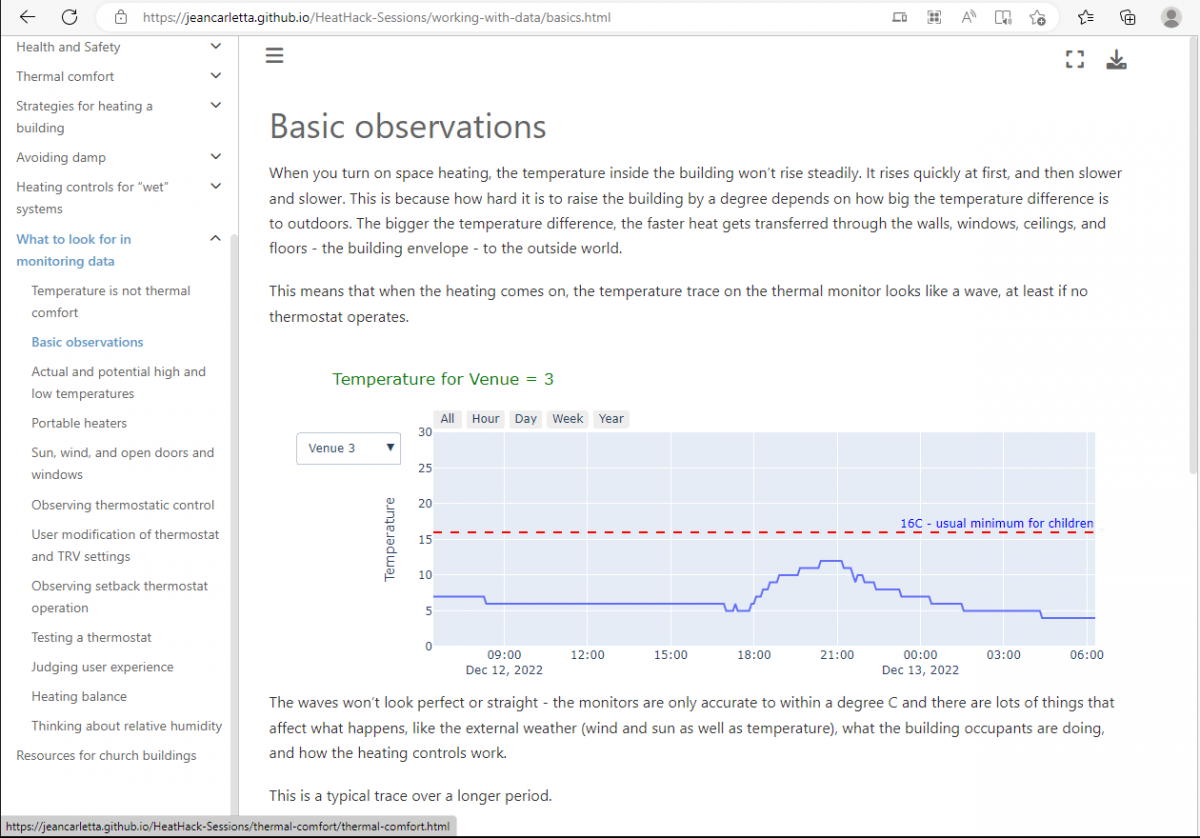Every venue participating in our project gets a thermal monitor that will either send temperature and relative humidity readings to a website or save them for the volunteer engineer to pick up using a smartphone. During each group’s third session, they combine the readings with the building user diary to think about what the building feels like to the people inside. Many of them are finding that their spaces are heated at the wrong times, and it’s very common for them to find out that a space comes to temperature and stays there just as a group is leaving. More than one has found they can immediately reduce their bills substantially just by taking old bookings out of the heating diary.
Our engineers having been asking us for help knowing what else to look for in the data. This is something of a black art, because what you can “read” is usually suggestive, not conclusive – but we’ve written down how we approach the data plots.
We suggest how they can be used to think about whether thermostats are effective and whether groups are creating problems for each other in the way they use the controls, for instance. We also use them to understand whether the strategy for preserving the building and its contents is wasteful and sometimes for spotting portable space heaters that users have snuck into the building. We have a couple of masters students who intend to help us improve this part of the programme over the summer, so please let us know how you get on with this.
